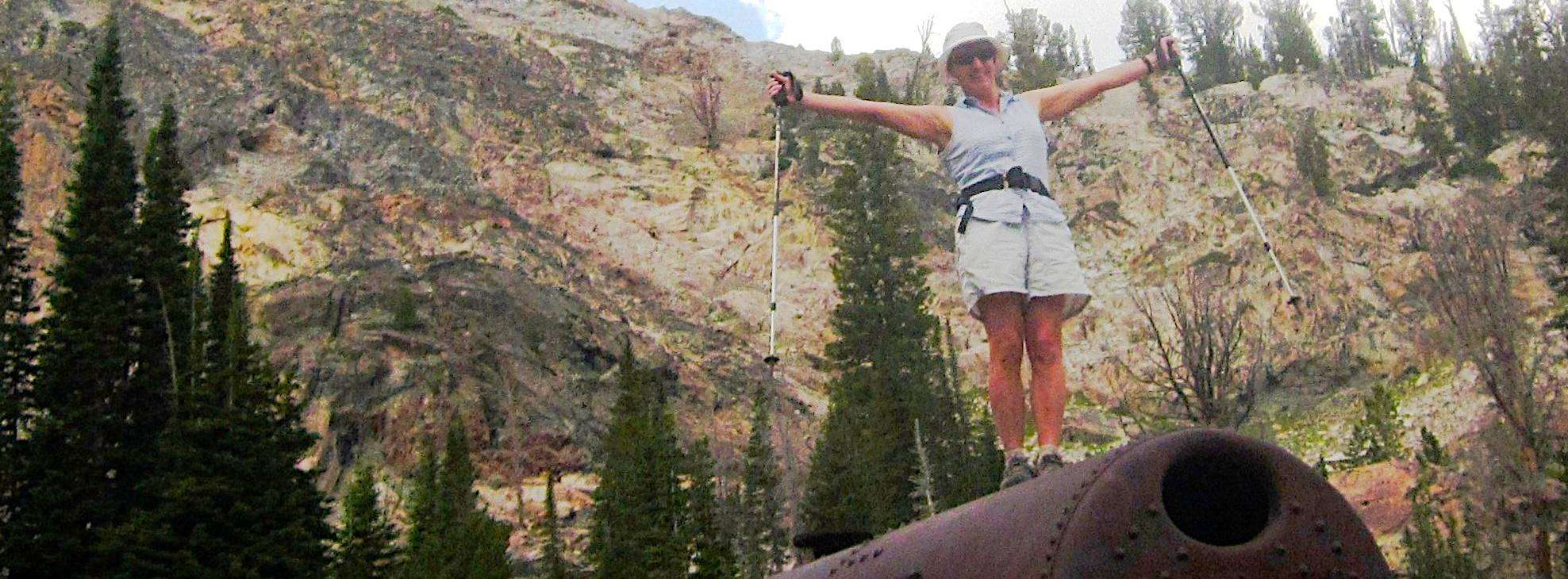No products in the cart.
Steamed

Boilers in the Mountains
Story and Photos by Ray Brooks
Idaho’s few high-mountain steam boilers left over from mining in the 1800s are interesting artifacts, but these rusty behemoths can present a danger to those who practice the arcane art of boiler riding. It’s likely not a new sport, although I have found nothing about it in Idaho history books. Riders must clamber up a steep, rusty, slippery, and ancient iron steam boiler, and then either straddle or stand on it. Of course, a scenic high-mountain setting and a nearby photographer enhance the enjoyment of boiler riding.
Naturally, this perilous sport appeals to my ex-Boise State gymnast wife, Dorita. She skydived for years and also enjoys technical rock climbing. A veteran boiler-rider, Dorita particularly enjoyed a 2015 visit to one of Idaho’s best-known boilers, which has managed to survive at an altitude of 9,200 feet, adjacent to the old Golden Glow ore concentrating mill in Boulder Basin, near Ketchum. Dorita mounted the boiler easily with a combination of gymnastic and rock-climbing moves that left her knees unscuffed. After determining that the boiler would not roll out from under her, she found her stance and posed proudly.
I agree that everyone should have a hobby, but I suffer from more hobbies than most old folks—and my oddest one is discovering Idaho mountain steam boilers that date from the 1800s. After falling in love with my first such boiler in 1964, my collection of sightings has grown to eighteen in a mere fifty-six years. That first boiler was perched on a mine dump, up a hidden side canyon only a few miles west of Hailey. I took a distant photo of it with a camera borrowed from my parents, and then walked over to the fourteen-foot-long, thick and rusty artifact. Fittingly, it looked as old as the mine dump it rested on. Ancient rivets marked where sheets of cast iron had been joined together. Its size and obvious age impressed me as a fourteen-year-old, and I became hooked on mountain steam boilers.
I haven’t tried to lug any of them home, though. They are commonly twelve to sixteen feet long and made of cast iron, so I suspect an average one weighs several tons. Although I’ve been content to find and photograph them, I think many boilers may have been hauled away in scrap metal drives during the two World Wars.
This content is available for purchase. Please select from available options.
Register & Purchase Purchase Only
Register & Purchase Purchase Only

